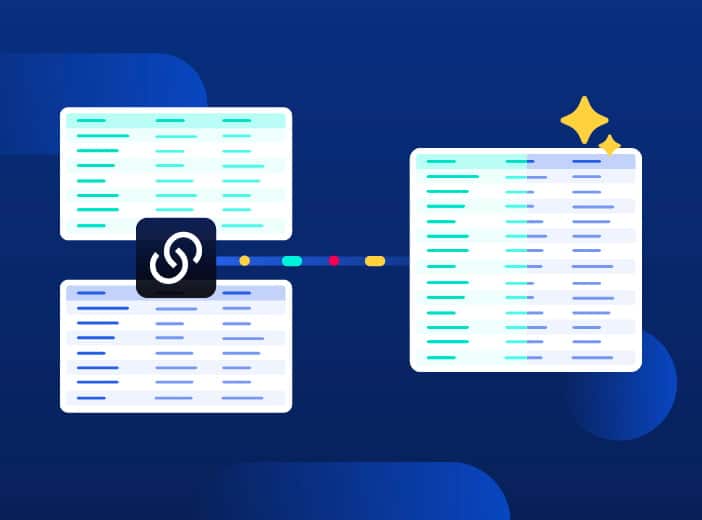Glossary
Data Preparation
Data preparation (or pre-processing) validates, cleans, consolidates and enriches the raw data collected by an organization.
Organizations produce and collect increasing amounts of data. However, in order to use it to inform better decision-making, it is essential to enhance the data preparation process. What is the purpose of data preparation? How do you prepare data? Discover the answers below.
What is data preparation ?
Data preparation (or pre-processing) is the validating, cleaning, consolidating and enriching of the thousands of pieces of raw data collected by an organization from different sources every day
Data preparation aims to make data accessible, transparent, and qualitative so that it can be accessed and used to create value. The goal is to enable all employees, whether they are data specialists such as data analysts and data scientists, or non-specialists such as sales managers or financial directors, to access and use the organization’s data with confidence.
What is the purpose of data preparation?
Data preparation is the essential step before any analytics work, as it improves the quality, reliability, and relevance of data.
Without preparation, organizations risk making decisions based on outdated or false information. This increases the risk of making the wrong choices, which can lead to losing competitive advantage and weakening their organizational reputation. By putting in place effective data preparation processes before any data analysis this situation can be easily avoided.
Effective data preparation allows organizations to draw relevant insights from reliable, qualitative information and enables them to make the best decisions about, for example, creating a new service, reducing costs, or improving business performance.
Data preparation is also essential to ensure the interoperability of data and guarantee its reuse with confidence.
How to prepare the data?
To achieve optimal quality, data preparation requires several steps.
Collect the data
The first step is to collect the available data, which can come from a multitude of sources, in a multitude of formats. It is then gathered within the organization’s storage solutions, information system or within data management software.
Explore the data
All the data collected must then be explored (checked) in order to verify its quality:
- Is the data complete?
- Does it match similar data sources?
- Does it fit with the organization’s predictions?
- Are there any anomalies?
Answering these different questions will allow you to prioritize which datasets are to be worked on, and how they should be prepared.
Structure the data
After the data exploration phase, it is important to structure the data, in particular by grouping interrelated datasets that share dependencies. If the data volumes are too large, it is possible to segment them into multiple categories to facilitate data preparation.
The information collected can come from a wide range of data sources, with differences in terms of structure, size, format, and even language. It is therefore essential to structure and harmonize it to facilitate its use.
Clean up the data
The objective is to improve the quality of the selected data by eliminating input errors, duplicates, missing data or obsolete information. At this stage, you should also hide confidential information (especially with regard to the GDPR).
Enrich the data
To make the best decisions, it is essential to cross-reference the organization’s data with external information. This can be reference data, open data or third party data.
This step allows you to bring context to the data and to reveal high value-added information.
Whilst the steps of data preparation can vary from one organization to another, it is can be a long and time-consuming process ,taking up to 80% of a data analyst’s time. Fortunately, it is possible to shorten data preparation while guaranteeing its quality with Opendatasoft.
Prepare your data with Opendatasoft
Time-consuming and repetitive, data preparation is nevertheless essential to data analysis. It is only when information is reliable and relevant that decision makers can make good strategic choices.
To help you prepare quality data in the minimum of time, Opendatasoft provides you with data preparation tools. Thanks to more than 50 processors you can apply geographic transformations, correct text, format dates, anonymize data and reshape the content of your dataset with precision and, as it is totally automated, without ever writing a single line of code.
By saving teams valuable time in data preparation they can then focus on analysis or gathering relevant information to bring maximum value to the organization.
Learn more

Blog
Opendatasoft boosts data enrichment, even when using the largest reference sources
Enriching your data is a key step in creating relevant insights and analysis that drives value. However, when it comes to using massive reference sources such as national company databases, detailed weather data or geographic/administrative boundary datato enrich your data, technical limitations often become a challenge.

Blog
Successfully scaling data products – best practice from McKinsey
Data products are central to increasing data consumption across the organization. But how can you ensure your data product program delivers lasting value? We explore the latest best practice from McKinsey, designed to scale data product creation and usage.

Blog
Combining data mesh and data fabric to drive greater data consumption
How can businesses organize their technology stacks to ensure that they both operate efficiently and meet the goal of increasing data consumption? We look at the importance of combining data mesh and data fabric approaches to drive success.